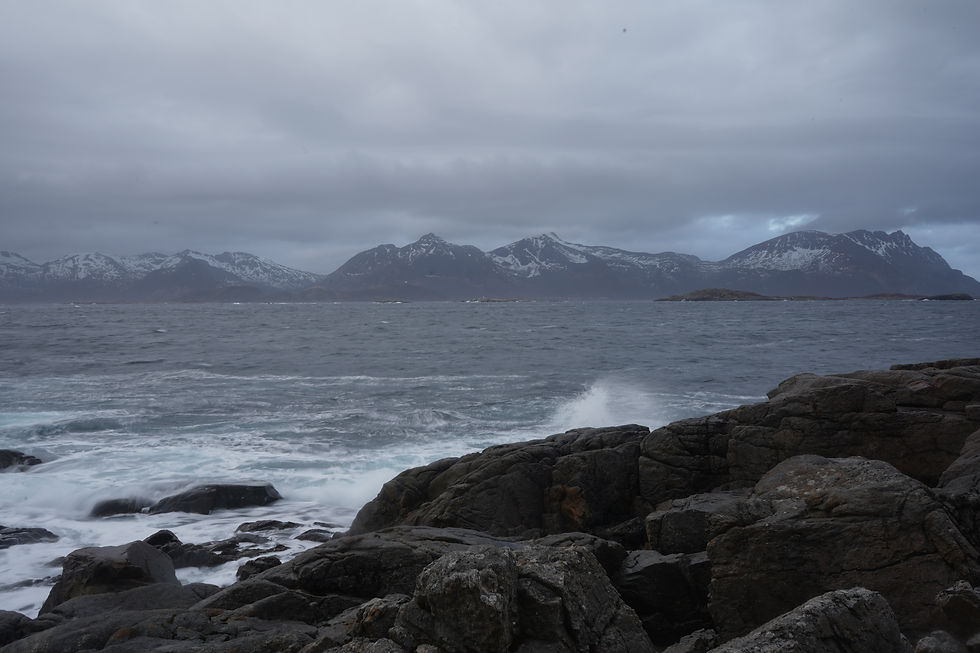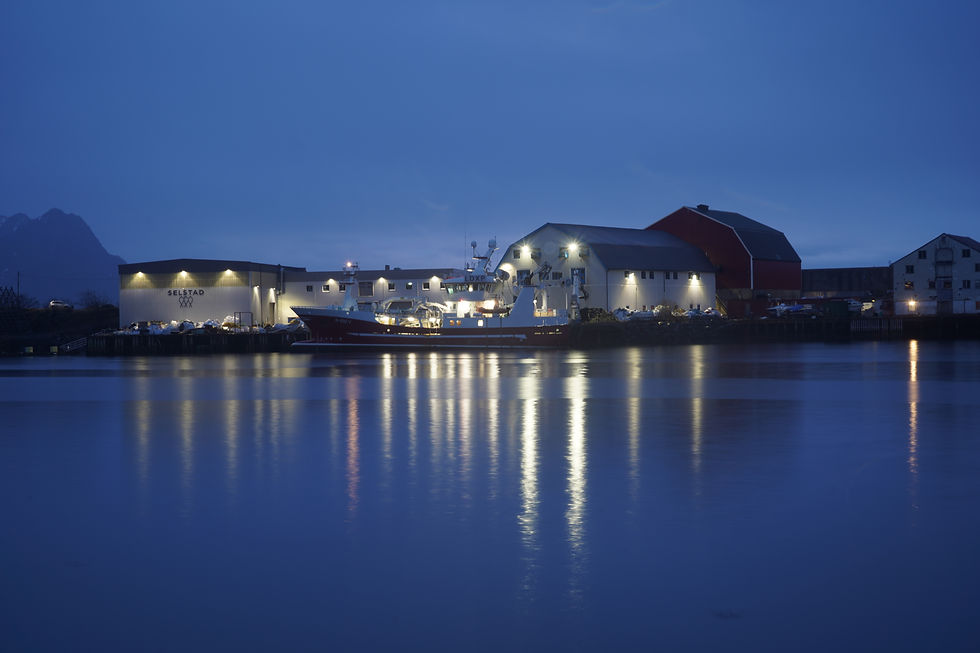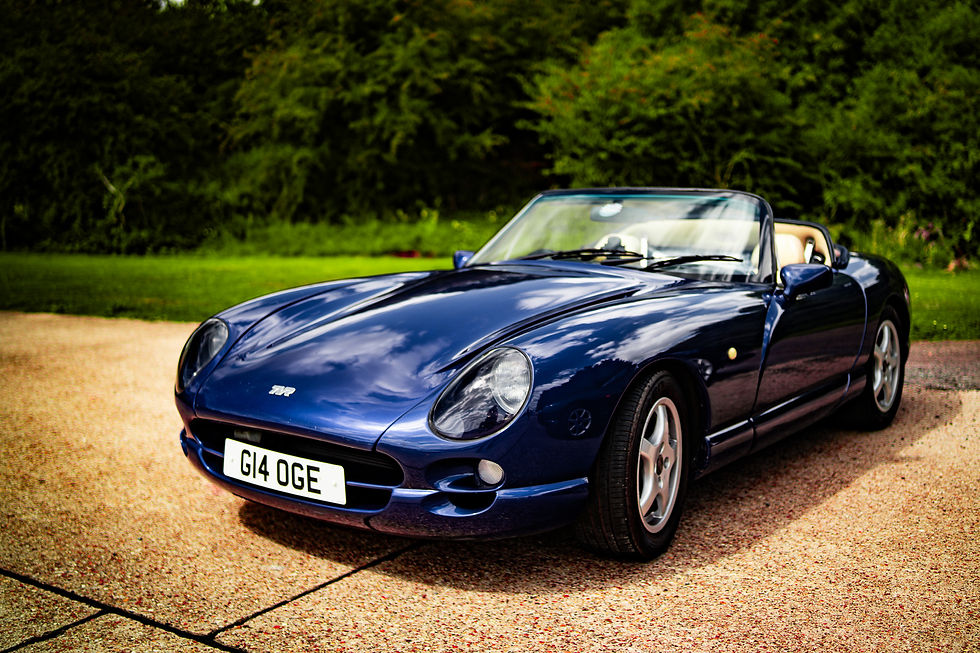Blog #14 - Finding My Way Through Filters: From Temu Disasters to Real Glass
- Rich

- Sep 7
- 6 min read
Other than cheap UV filters to protect the front of the lens, I’ve never really known much about them. In fact, I’ve had some cheap as crap ND filters rattling around in the bag for years and never once felt the need to screw them on. They always seemed like one of those extra accessories for people who either had too much money or too much time on their hands. My approach was always simpler: buy a lens, point it at something, see what happens.
That changed in Norway.
We were out on the road, me and Junior, somewhere between fjords and mountains, when he whipped out his super fancy square screw-on ND filter system. Drop-in plates of actual glass, carefully slotted into a holder like surgical instruments. Graduated filters for the sky, dense blocks for slowing water, the whole posh setup. He decided to point his camera at some waves, and the next thing I know we were parked in a lay-by for several hours, him lost in his long exposures and me sitting there wondering if this was photography or therapy. It was oddly calming though, the steady rhythm of the water, the deliberate way he set everything up, the patience it demanded.


When I saw the results on the back of his camera, I thought: this is something I need to explore.
That same night, slightly tipsy after a few drinks and still looking for somewhere that served steak, we ended up down by a harbour. Junior used a signpost as a makeshift tripod, balancing the camera like a drunk tightrope walker. Junior explained that with ND filters, you can basically recreate those silky, smooth water effects in daylight that I had only ever seen from long exposures at night. The penny dropped. Stick a dark bit of glass in front of the lens and you are tricking the camera into thinking it is darker than it really is. That means longer shutter speeds, which means movement gets smoothed out instead of frozen. It felt like discovering a cheat code.

Since then, long exposure photography has been parked firmly on my ever-growing list of techniques I want to learn and actually use.
Of course, being me, my first attempt at building a system was not exactly wise. I went the cheap route, ordering a set of drop-in plate filters from Temu because, well, they looked like Junior’s posh ones, just at a tenth of the price. They worked in the sense that they darkened things, but the quality of the images was absolute rubbish. Weird colour casts, softness around the edges, reflections where they should not be. Straight to the B1n folder.
Next came the variable ND filters, the screw-on kind where you just twist the ring and it goes lighter or darker. I had never even heard of step-up or step-down rings at this point, so in my infinite wisdom I just bought one filter for each lens size. More Temu bargains. More face palm moments.
The thing is, I actually liked how the variable ones worked. They were quick, easy, and gave me a taste of what was possible. I could darken a scene, slow the shutter, and start experimenting. But they came with baggage. Push them too far and the dreaded X-pattern appeared across the frame, like a watermark announcing “this guy bought cheap filters.” On top of that came heavy vignetting, which might be fine if you want moody corners, less fine if you actually wanted a clean shot.
This was starting to annoy me. My images were getting, let’s say, “better than crap,” but they were still being dragged down by cheap kit. There is only so much you can polish when the glass in front of your lens is working against you, the phrase "you cant polish a turd" often came to mind!
Somewhere in the middle of all this I dipped my toes into CPL filters, circular polarisers. Same story again: cheap Temu versions. I had heard about how they cut reflections off water or glass, but the best results I actually got were at a TVR day. It was blazing sunshine and the CPL did a decent job of toning down the harsh reflections bouncing off the sports cars. For once, it felt like the filter was actually helping instead of ruining things.

Then there were the curveballs. I bought a quarter-strength black mist filter, the sort that is supposed to give a soft, cinematic glow to highlights. I also tried a “light pollution” filter, which is meant for astrophotography, cutting out sodium streetlight wavelengths. Both of them appear to have done precisely nothing. Either they do not work, or I do not.
Anyway, fast-forward to now. I have finally bitten the bullet and invested in something proper: the K&F Concept square kit. These are the real deal, actual glass, not plastic. It comes with ND8, ND64, and ND1000 filters. In stops, that is 3 stops, 6 stops, and 10 stops of light reduction. To put that in context, ND8 turns a 1/250s exposure into 1/30s, ND64 takes it to 1/4s, and ND1000 drags it all the way to 4 seconds. That is the difference between freezing a wave, blurring it into a sweep of motion, or smoothing it into glass.

At its simplest, an ND filter is just a piece of darkened glass, but what it is really doing is controlling how much light hits the sensor without changing the colours of the scene. The camera still sees the world exactly the same way in terms of tones and hues, but because the light is being restricted, you are forced to either slow the shutter or open the aperture to compensate. That is why they are so useful in bright daylight when even your lowest ISO and narrowest aperture still will not let you drag the shutter long enough. Without them, a sunny day might lock you at 1/2000s whether you like it or not, freezing everything into clinical sharpness. With an ND, you can stretch that same moment into seconds, turning people into ghostly trails, water into smooth ribbons, or clouds into streaks. It is not about fixing a technical problem, it is about creating an artistic one, bending time inside the frame in a way your eyes cannot naturally see.
The kit also includes a drop-in CPL, which is pretty slick, and adapter rings for 67, 72, 77, and 82mm, so it should fit most of my lenses without me buying five versions of everything again. I have also got a graduated ND plate on order, which should help balance bright skies against darker foregrounds. The idea of being able to slide the gradient up or down depending on the horizon makes sense to me, far more flexible than hoping the camera’s dynamic range can stretch it.
Tomorrow I plan to give it all a go. The only problem is, Leicestershire is not exactly blessed with dramatic waterfalls or crashing waves. If I want moving water, I will have to get creative with streams, fountains, or maybe even just traffic if I get desperate. It is going to be a solo trip though. No Emma, no Bow. I need time to set up properly, fiddle with the kit, and sit still long enough to learn something. Trying to do that while chasing a four-year-old wobbling around on a bike without stabilisers would be madness.
Talking about all this at the rugby match I was covering today, it hit me how my gear acquisition syndrome is not calming down. If anything, it is evolving. At least now I am starting to invest where I have genuinely hit a wall. I have reached the point where the cheap Temu gear cannot keep up. I am losing good shots because they are being taken through sub-par plastic, and that feels like the wrong place to compromise. Hence the step up.
Filters have turned out to be a strange little turning point in my photography. They are not glamorous like a new lens, and they do not come with the excitement of a new camera body, but they change the way you shoot. They slow things down, force you to be deliberate, and open creative doors that were not there before. I have gone from thinking of them as gimmicks to seeing them as tools that might actually shape the way I work.
And that is what makes me oddly excited. Not just about the results I might get tomorrow, but about how the process of using filters might change me as a photographer. Because that is the thing about this hobby, it is never just about the photo. It is about the way you see, the way you work, the way you spend your time.
If filters help me spend more of it slowing down, noticing things, and experimenting, then maybe the money was not wasted after all.






Comments